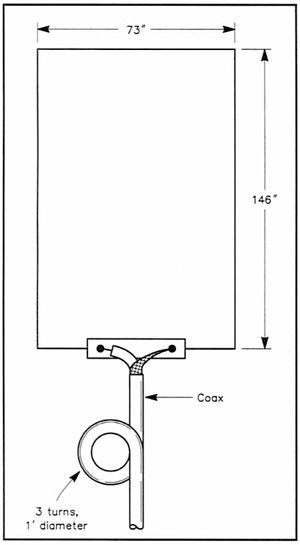Here’s something interesting about the loop antenna and folded dipole antenna. If you read my blog, you’ll remember that I recently put up a 10m loop antenna.
 Well, this loop has a full wavelength of wire and is twice as high as it is wide. In this configuration, the antenna has a feedpoint impedance of 50 ohms.
Well, this loop has a full wavelength of wire and is twice as high as it is wide. In this configuration, the antenna has a feedpoint impedance of 50 ohms.
If you take that same wavelength of wire and configure it so that the height is very small with respect to the width, you have a half-wavelength, folded dipole. In this configuration, the feedpoint impedance is about 300 ohms.
Back in the day, hams used this to make folded dipoles out of 300-ohm twinlead, the same kind of wire used to connect TVs to external antennas. Not only did the twinlead serve as the antenna wire, but it also served as the feedline, and because this twinlead was mass-produced, it was relatively inexpensive. To match the 300-ohm impedance to a transmitter, you did need some kind of transmatch or a balun, but overall, this type of antenna works very well and was cheap to build.

If you take that same wavelength of wire and configure it so that the height is very small with respect to the width, you have a half-wavelength, folded dipole. In this configuration, the feedpoint impedance is about 300 ohms.
Back in the day, hams used this to make folded dipoles out of 300-ohm twinlead, the same kind of wire used to connect TVs to external antennas. Not only did the twinlead serve as the antenna wire, but it also served as the feedline, and because this twinlead was mass-produced, it was relatively inexpensive. To match the 300-ohm impedance to a transmitter, you did need some kind of transmatch or a balun, but overall, this type of antenna works very well and was cheap to build.
What about 2 meter version
ReplyDelete